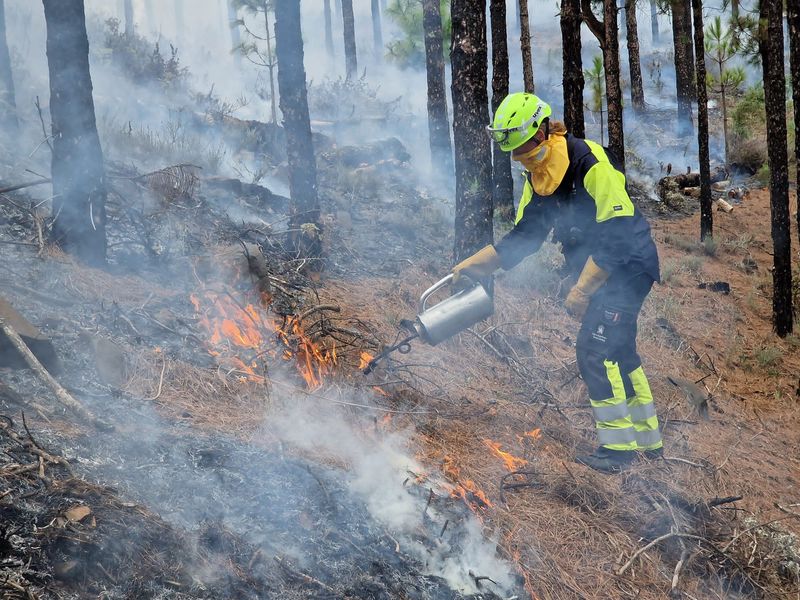The EWED project (Extreme Wildfire Events Data Hub for Improved Decision Making) has officially started with a meeting between representatives of the participating organisations on the 30 and 31 January. Over two years, EWED will advance the existing knowledge of Extreme Wildfire Events (EWEs), and the capacity to prepare for and respond to these events.
EWEs are wildfires that, by modifying the structure of the atmosphere, propagate more quickly and burn more intensely than other wildfires. Furthermore, their behaviour can´t be fully predicted, altogether making it very difficult to fight them. Due to climate change, for example, in Catalonia EWEs have gone from representing 0,2 – 0,5% to 5 – 7% of existing wildfires in the last years. Their frequency is increasing, yet we don´t understand enough to be able to face them.
“We don’t know how these wildfires (EWEs) work. Therefore, we need to generate new knowledge, which involves collecting and analysing data”, states EWED Project Coordinator Jonathan Troncho (Pau Costa Foundation).
“EWEs are not predictable because their behaviour has not been linked to the data that we can measure and observe on the surface. So, it is a difficult process to model. Technology now allows us to start focusing on this type of problem. Even so, they are a problem for which we need to have a physics-based knowledge of fire-atmosphere interaction that we do not fully have at the moment, and we have to worry because things are getting worse, they are accelerating”, adds Marc Castellnou (Catalan Fire and Rescue Service).
EWED is a project led by the Pau Costa Foundation and funded by the KAPP 2023 programme (Knowledge for Action in Prevention and Preparedness) of the EU Civil Protection Mechanism. Six partner organisations from academia and fire management from four European countries form its consortium. They are joining forces to collect on-site data of EWEs to feed simulations of the interaction fire-atmosphere during EWEs on the first data portal of European EWEs. This interface will help analyse real-time ongoing EWEs and develop recommendations for disaster risk management.
“We want to build an interface between high-resolution models that, if we have good data from within the fire convective columns, can begin to produce the first reliable results on how these fires behave. What we are building here is the first interface between firefighters and scientists during fires where, at the same time as decisions are made, a high-resolution model is being formed to solve these future problems”, explains Marc.
At the kick-off meeting, partners went over the objectives of the project, explained the tasks by areas of expertise (work packages), and shared each one´s needs and expectations. The Project Officer, Teresa Capula, participated in the meeting and praised the team on the project design.
“With this initial meeting, we were able to synchronise our efforts and ensure that we are all in the same boat and rowing in the same direction. I have seen everyone very motivated, eager, and looking forward to the project. Despite being a small consortium, I think the project will have a very big impact”, states Jonathan.
The next EWED event will be a field exercise focused on methods for data collection. It is hosted by the Catalan Fire and Rescue Service and will take place in March in Manresa, Spain.
“Things will start to get more in place in March, when we will start, at least, producing the first tests where people can start working with real things”, points out Marc.






